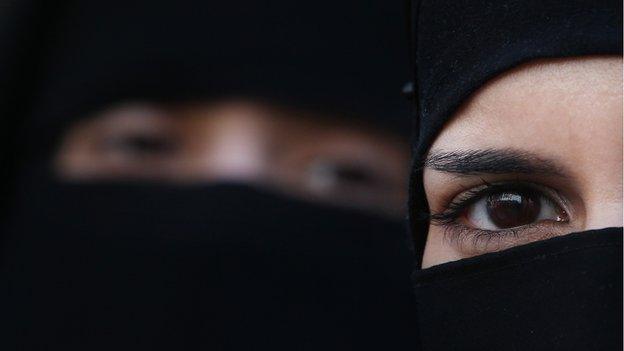French shrug off Muslim upset at abaya ban in schools
- Published
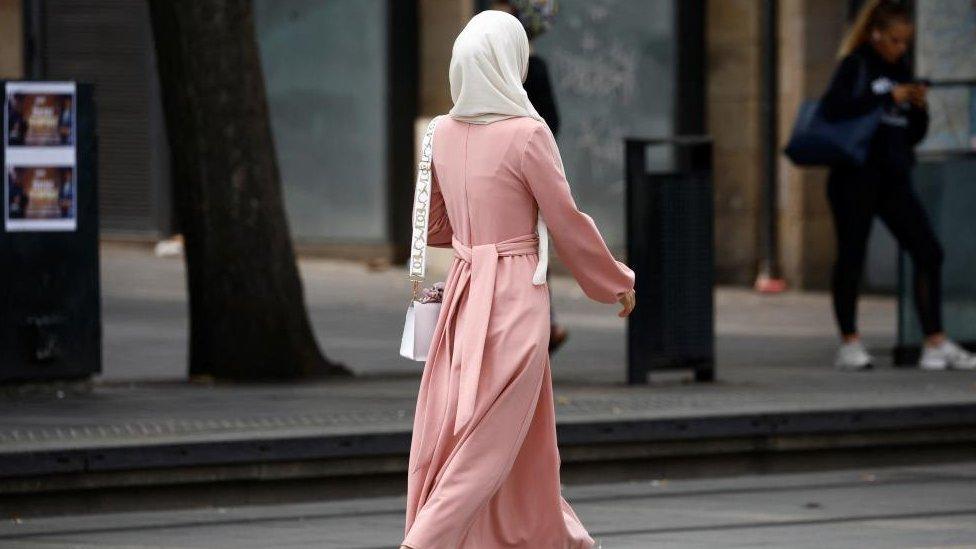
Polls suggest four out of five French people back the ban on girls wearing an abaya in school
Why should a teenage girl not be able to express her religious beliefs and at the same time pursue an education at school?
It is a tough question, but one to which the French believe they have an answer.
Which is, broadly, because there is such a thing as a French nation, and the teenager is part of it. Nothing defines France, and separates it from its neighbours, quite so clearly as the issue of la laïcité, or secularism.
So this week, as outsiders looked on with a mixture of astonishment and outrage at the banning of the traditional Muslim abaya robe in schools, the French themselves gave the measure an overwhelming 81% thumbs-up, according to polls.
What for many in the outside world - as well as French Muslim women - came across as a blatant breach of human liberty, was seen in France as a means to another of the holy Republican triptych: equality.
And softened with a little bit of the third value - fraternity, or better, sorority - they couldn't see why it should be a problem.
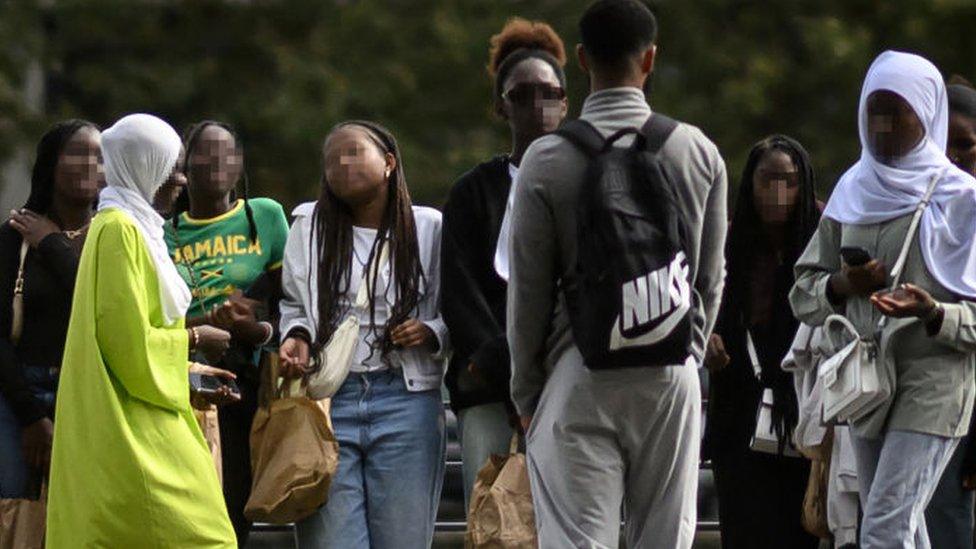
Many French Muslim women argue the abaya is more cultural or traditional than it is religious
In fact, the abaya is just a new iteration of a debate that goes back more than 30 years.
The first publicised case of Muslim girls being refused admission to schools because of their dress - head-coverings - was in the town of Creil near Paris in 1989.
Since then, France has had the 2004 law barring "conspicuous" displays of religious affiliation in schools; the 2010 law barring the full-face veil in public places; and the 2016 row over burkinis, which ended up not being banned.
Recently, there have been more rows over Islamic headscarves in sport.
This latest controversy was triggered by government figures which show that in the last academic year there was a big increase in what are described as "breaches of secularity" in schools.
In 2021-22, there were just 617 instances documented. That has grown to 1,984.
In the great majority, these were Muslim teenage girls wearing the abaya.
Pronounced "ah-bye-ah", it is a long-sleeved, loose-fitting robe usually worn over other clothing by women in parts of the Middle East and Africa.
Its voluminous shape covers the whole body, except for the head, neck and feet.

Thought to come from Iraq or Syria more than 80 years ago, it then made its way into Arab Gulf states, North Africa and some sub-Saharan countries.
Traditionally black, it has grown in popularity and is now available in different colours, shades and styles.
For many Muslim women it has become as much a symbol of fashion as it has tradition and identity. Luxury fashion brand Dolce & Gabbana released an abaya collection in 2016 in the Middle East.
In France, the government's view is that abayas appearing in greater numbers in schools is not just random stories of teenagers re-discovering an interest in their cultural heritage.
It sees them as deliberate attempts - to varying degrees organised attempts - to challenge the system and see how far la laïcité can be pushed back.
The 2004 law banned "conspicuous" signs of religion - and that clearly encompassed Islamic headscarves, which have now disappeared from French schools. But did it also include long Islamic-style dresses?
School heads were clamouring for guidance from government because they could see the fad becoming a trend, encouraged by influencers on social media and, according to some, religious groups linked to the Islamist Muslim Brotherhood.
The previous education minister Pap Ndiaye refused to take a stand - influenced, according to his critics, by his background in US academia and its "wokeish" value system. His replacement since July, Gabriel Attal, who is a young ally of President Emmanuel Macron, had no such qualms.
It was he who ordered the abaya ban just before the start of this term.

Education Minister Gabriel Attal, who introduced the ban, visited a school with President Macron this week
For many French Muslims, the rule is an affront because they feel it is their religion that is invariably singled out for treatment.
"If little girls can go around wearing shorts, leggings, dresses, then they should also have the right to wear abayas," complains Chaimae, a Muslim woman of North African descent who left France because of the disrespect she felt.
Sokhna Maimouna Sow, a Muslim woman of Senegalese origin who came to France to study 11 years ago, says the ban is nonsense: "They say this is a country of liberty, but you're not allowed to do things that are part of your culture and religion."
Lina, a 21-year-old Parisian, sees the abaya as cultural and nothing to do with Islam: "Every year France comes up with some new law when it comes to Muslims."
Doura, a French Muslim woman of Egyptian background, agrees: "It is just a long dress like any other dress, so why ban it in schools? I don't wear abayas, but I am sad France has reached this point."
Such views have the backing of a small but important part of the political spectrum: the radical left.
The France Insoumise (France Unbowed) party of Jean-Luc Mélenchon has roundly condemned the ban, accusing the government of being "obsessed" with Muslims and pandering to the right.
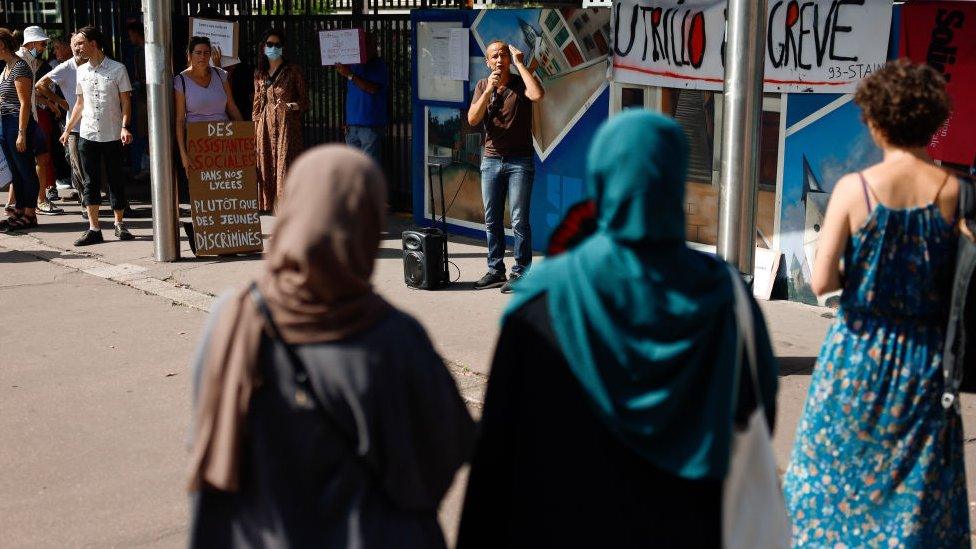
Staff at this high school in the Paris suburbs organised a rally against the ban on abayas
But the rest of the political establishment, reflecting the widespread public support, has lined up with the government.
Even the left-wing teaching unions are broadly in favour, confining their attacks to allegations that the abaya is "hiding the real issues" over lack of funding in schools etc.
"The abaya should be banned at school," a non-Muslim teacher called Manon told the BBC. "Because when you arrive for class you shouldn't be able to distinguish anyone's religion."
The truth is that most French people, and that of course includes many Muslims, genuinely believe in the principle of keeping religion out of schools.
When President Macron says it should be impossible to look at a pupil and know his or her religious faith, they agree.
When he argues that being strict on this actually ensures individual liberty in the long run, and that it keeps a united France from splitting into a myriad "communities", they also believe him.
And when feminists say that the abaya may not technically be a religious garment but its body-hiding form was determined by traditionalist Islam, most people in France concur.
A week after the ban was implemented, the level of opposition has been low.
There have been some acts of defiance - 67 girls refused to change out of their abayas on the first day of the new term.
But of a mass movement of resistance there is no sign. No mass-donning of abayas, no sit-ins.
Once again, France is showing how it differs from other places.
France's highest administrative court, the State Council, has rejected a bid to overturn the ban, deciding it was based on French law and caused no "serious or obviously illegal harm".
Outsiders may raise their hands in horror at the abaya ban, but by and large the French do not.
Related topics
- Published5 September 2023
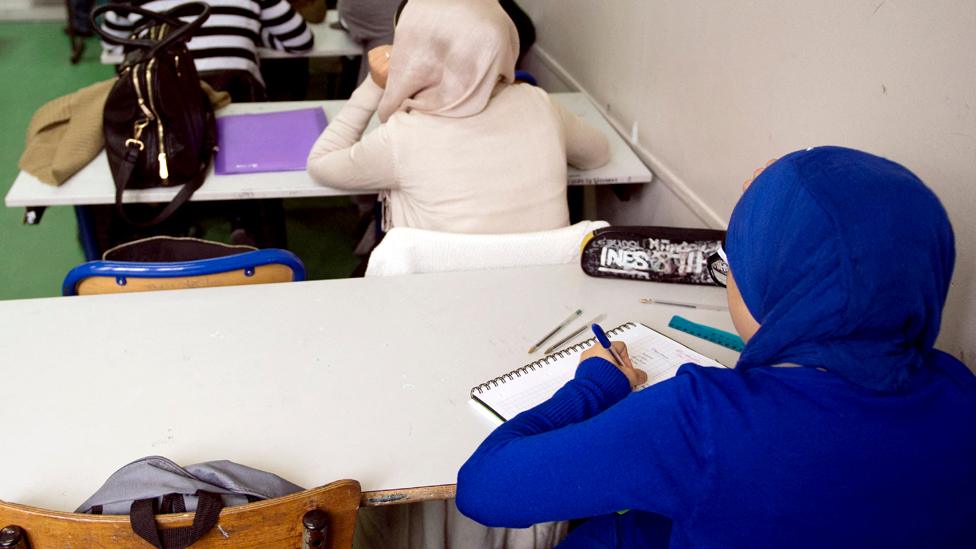
- Published16 August 2016
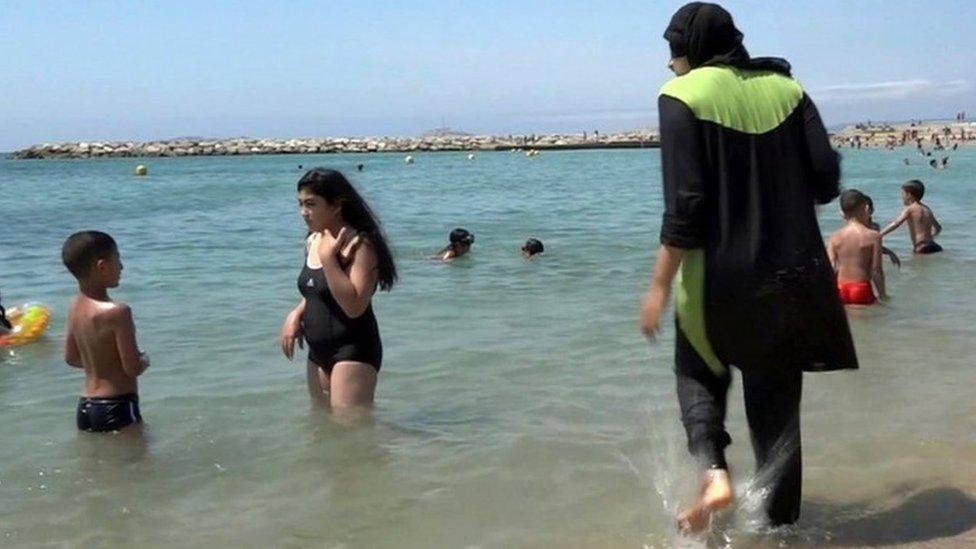
- Published31 May 2018
